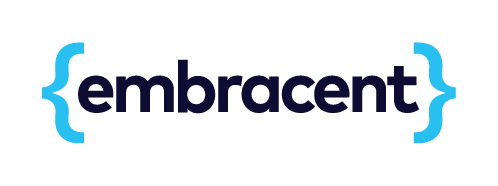as well as #whiteboardwednesdays, the team at embracent have started monthly #financeflipcharts to broaden knowledge of all things finance across the business.
With many Finance processes being perfect candidates for automation, and more and more organisations looking to initiate Finance transformations, everyone at embracent is keen to better understand Finance so that we can deliver the best possible service for our clients.
Following the first flipchart, our Business Analyst, Nina, created a handy ‘jargon buster’ to break down some key Finance definitions:
1. general ledger
- Critical to the operation of Finance, the general ledger (GL) is a way for a company to record financial transactions and financial performance in a structured, logical way.
- All financial transactions should appear in the GL and it is therefore the single version of the truth of financial data from which all reporting is undertaken.
2. chart of accounts (CoA)
- Held within the general ledger, a chart of accounts is a list of financial accounts organised according to how the business wants to capture financial transactions (costs, revenue etc.), providing a structured way for the company to track performance.
3. journals
- A journal is a transaction that enters data into the GL structure. Any journal entry must have an equal and opposite debit and credit because the accounting logic means that the GL has to balance.
- Journals can either be automated and processed based upon rules set up within the chart of accounts, or manually created and posted by someone in the Financial Accounts team.
4. reconciliation
- A critical financial control to prove that transactions have entered the general ledger correctly by comparing two sets of records, e.g. a bank reconciliation involves matching a company’s accounting records against a bank statement.
- Reconciliations are a way for Finance to prove that the balances held in the GL are real, and the reconciliation of control accounts is a fundamental piece of financial governance.
5. cost/profit centres
- Cost and profit centres are a way of identifying, capturing and reporting costs or profits into different business areas or functions.
6. company codes
- For larger businesses with multiple companies within their organisation, company codes are a way of structuring and categorising financial entries between companies within one larger business.
7. accruals
- A fundamental accounting principle is the “matching rule”. This means that revenue and costs must be recorded in the period in which they were incurred. This is otherwise known as the “accruals” concept.
- There is often a difference between when an activity is performed and when money flows into the business or invoices are raised. In these cases, a journal is created to ‘accrue’ the revenue (and act as a placeholder) for the month in which the work is completed, to ensure the revenue is reported in the correct month.
- The same treatment is applied for costs, again, to ensure costs are reported when they are incurred – not necessarily when they are invoiced.
8. deferrals
- This is when invoicing has occurred for work that is yet to be completed. This can’t show as revenue / cost for the month it is billed, so is deferred to the appropriate month in which the product or service is delivered.
- Accruals and deferrals are all about making sure we are reporting the revenue or cost at the time in which the work is delivered, or once the obligation to the customer has been fulfilled.
9. reversing journal
- A reversing journal is an entry that will automatically reverse itself the following month (or after a specified date) to adjust the GL when accruals are reported. The entries in the original month remain, but equal and opposite entries are posted in the following month.
- This should coincide with the issuing or receipt of an invoice – meaning the reversing journal and the invoice cancel each other out in the GL – leaving just the original entry at the time the event occurred.

